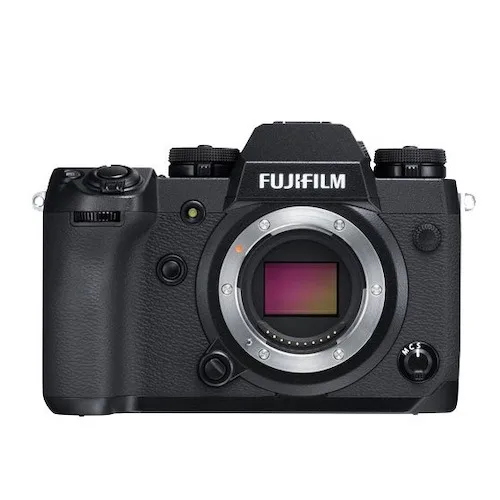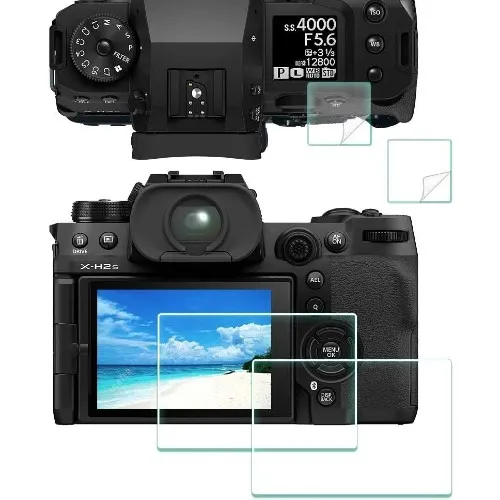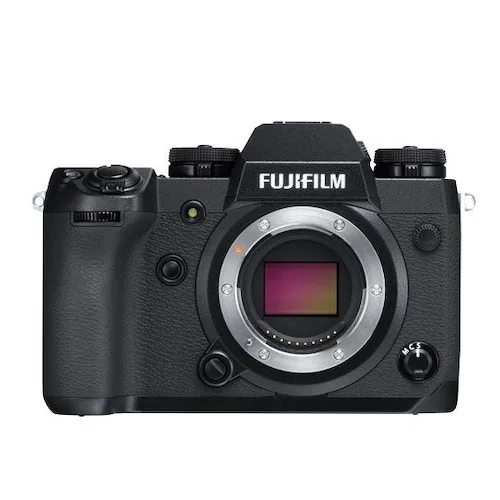Fujifilm X-H2 review: Redefining crop sensors
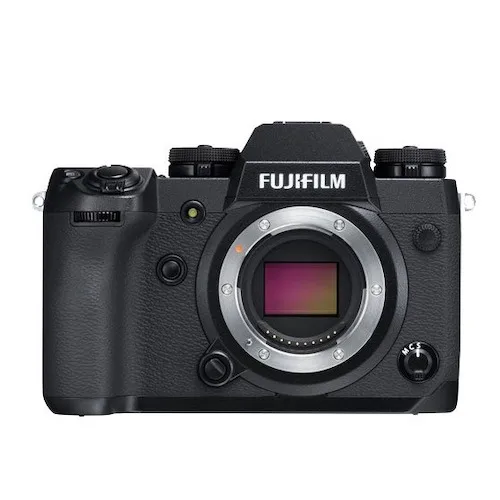
Summary
Quick verdict: With their highest resolution crop sensor ever, the Fujifilm X-H2 unlocks a world of detail once thought unobtainable by APS-C photographers and videographers.
- The 40.2-megapixel sensor provides incredible image quality for both video and photo
- The grip will fit perfectly in most people’s hands
- Provides all of the ports you need to further rig the camera for video production
- Single PASM dial won’t please Fujifilm die-hards
- Switch to button presses makes some settings unnecessarily cumbersome
- ProRes locked behind expensive CFast Express B card3
Fujifilm surprised a lot of people with not one but two X-H2 models this year.
The X-H2S, released in July 2022, is built for speed with a 26.16-megapixel stacked sensor. It's able to take photos up to 40 frames per second and has some of the fastest autofocus ever seen on a Fujifilm.
The camera this review is focussed on, the X-H2, puts a greater emphasis on resolution with a 40.2-megapixel sensor and the ability to shoot 8K video.
Both cameras share the same body and menus but because they do slightly different things, it's tough to point to one as the superior choice. I can tell you this though: the X-H2 is an incredible camera for Fuji photographers and those who are interested in exploring the Fuji X system.
Buy Fujifilm X-H2 products
Design
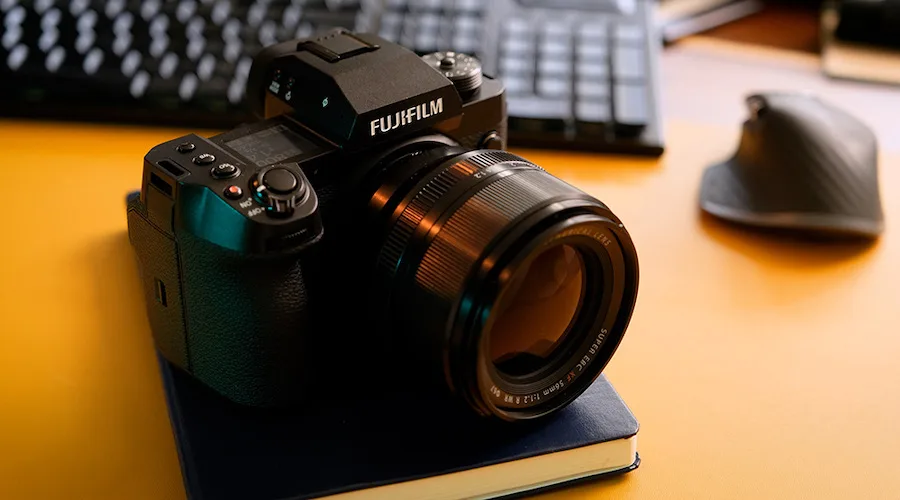
Image: Tobias Venus/Finder
The X-H2 moves away from traditional dial controls to a single PASM dial (Program, Aperture Priority, Shutter Priority and Manual) with 7 custom modes. These modes are a welcome addition to Fuji shooting, especially with all the film simulations you have to pick from. It's just unfortunate that so many functions that previously had dedicated tactile controls on dials are now stuck behind button presses.
ISO is now controlled through a dedicated button on the top panel, which means thumbing through multiple button presses with the d-pad or joystick to pick your setting. Cumbersome. "No worries", I thought, "I'll simply map it to one of the scroll wheels. I do that on the XT4 most of the time anyway," Nope. That's suddenly not an option on the X-H2 line.
There's a similar issue with autofocus. On previous cameras, this would be a simple flick of the switch but now it takes at least 3 button presses to change modes. Frustratingly, you can't even change these settings while recording video. You have to stop, reset your settings and hit record again. This was never a limitation on previous cameras thanks to their manual dials.
If you'd like to hear more about how much I dislike this change and how it impacted my professional work filming a live band, watch my review of the X-H2S above.
There's also an e-ink display on the top of these cameras that shows battery capacity while switched off and most of the key settings while switched on. It's an odd feature. I found I never looked at this display while shooting because the information is better presented on the LCD or the electronic viewfinder anyway. Still, I think it adds a splash of style to an otherwise boring camera aesthetic. At least it shows you the battery levels at all times. I found that genuinely useful.
There's also a lot to love with this design. On the left of the camera body behind 4 weatherproof doors, you'll find everything you need to rig it out for bigger video production work. This includes a fully-fledged HDMI port, a USB-C port for charging, a 3.5mm headphone jack and a microphone input.
It's also just my absolute favourite camera to hold with the solid rubber grip fitting in my hands perfectly. The chunky grip briefly had me all nostalgic for my old Canon 7D Mark II… until I remembered how much that thing weighed. It's good to live in a mirrorless future and the X-H2, while chunky, is still lightweight enough to make me appreciate how far we've come.
Photography

Image: Tobias Venus/Finder
The main draw of this camera is its 40.2-megapixel sensor, which is actually the highest resolution sensor on a crop camera ever made, just beating out the recently released Canon R7 (32.5MP).

Image: Tobias Venus/Finder

Image: Tobias Venus/Finder

Image: Tobias Venus/Finder

Image: Tobias Venus/Finder

Image: Tobias Venus/Finder

Image: Tobias Venus/Finder

Image: Tobias Venus/Finder
Above are some photos I captured in my travels while testing the camera over a 2-week period.
From behind the scenes at a video game convention in Melbourne to the neon-lit streets of Sydney's Chinatown to a live stream production of Finder's innovation awards, the X-H2 excelled in all shooting conditions. I was constantly impressed by how gorgeous each image looked straight out of the camera before I'd even taken them to post-processing.

Image: Tobias Venus/Finder
It certainly helps that most of the time I had it paired with Fujifilm's excellent new 56 millimetre ƒ1.2 prime lens. That aperture allows you to take really soft, shallow depth of field photos in even the darkest of places but I found even the X-H2 itself excelled in low light.
The in-built image stabilisation allows you to shoot at pretty low shutter speeds, even if you're just holding it in your hands. I got as low as 1/30 without any noticeable blur. The ISO is quite impressive on this as well, producing quality imagery way into the 6400 range.
If you really want to go big, this X-H2 is the only one that gets Pixel Shift mode, which uses the in-built image stabiliser to take 20 photos at slightly different angles. You can then use some dedicated desktop software to stitch all of these together to create a 160-megapixel image. Because it takes over 10 seconds to capture the full 20 photos, you're limited to anything that doesn't move at all but it still is a lot of fun capturing ultra-high detailed images of still life. As primarily an events shooter, I likely won't be using this feature much but I can see product photographers getting some use out of it.
Video

Image: Tobias Venus/Finder
If you need 8k video up to 30 FPS, this is now one of the cheapest ways to get high-quality 8K from a mirrorless camera. I was worried that may come with some compromises. Perhaps a heavily cropped image or lowered bitrate. But no! I was pleasantly surprised. It's as good as ever and you get access to the full sensor.
If you don't need all that resolution, you can still make use of the big sensor by using 4k HQ mode, which over-samples from 8K. It's only a minor upgrade over regular 4k but I was more than happy to use that mode for some professional freelance work as well.
Both X-H2 models can record ProRes natively, which had me quite excited when I first heard of it. Fujifilm's video files often give me grief when editing 4k video and the switch to ProRes would certainly help with that issue. Unfortunately, that feature is reserved for a CFast Express B card, which takes up the second slot in the X-H2's media tray. CFast Express B cards are very expensive.
I get it, the files are huge and quite often an SD card won't be able to record that much data quickly enough. Just know you will have to spend a fair bit extra if you want to maximise this camera's video potential.
X-H2 vs X-H2S

Image: Tobias Venus/Finder
After spending time working with both X-H2 models this year, it's still tough to judge when you should buy one over the other.
While it doesn't get 8K, the X-H2S still records in 6k, the autofocus is markedly better and it fares better in higher frame rate video. Even though it is lower resolution, these features make the X-H2S the favourite for videographers.
It's also a fantastic photographer's camera though. With up to 40fps burst shooting (if you have a CFast Express B card) and improved subject detection, you'll want this by your side if you're taking it to sports or fast-moving events like a music festival.
Meanwhile, the X-H2, thanks to its massive 40.2-megapixel sensor, is the favourite for other forms of photography.
Should you buy the FUJIFILM X-H2?
- Buy it if you want the best APS-C Fujifilm has to offer.
- Don't buy it if you're a Fujifilm die-hard or need the X-H2S's speed-focussed features.
If you're a photographer, this comes highly recommended. After recording the video review above, I went out and bought one because I really wanted to continue working with this camera. If that's not a glowing review, I don't know what is!
The higher megapixel count than what we're used to on normal Fujifilm crop sensors really just elevates what you can get out of their glass and I'm excited to see what else I can do with this. Perhaps I'll even get used to button presses and the PASM dial in time.
For videographers, while the X-H2S is still considered the better choice, this is still an amazing video camera as well. You've got the ports on the side, it does up to 8K and the autofocus on this one still improves on the X-T4.
It's also $500 cheaper. That seems like a bargain next to the lower-resolution X-H2S.
Pricing and availability
Specifications
Specs
Features
How we tested
The Fujifilm X-H2 and 56mm lens were provided to Tobias on loan for 2 weeks by Fujifilm Australia. In that time, it was used for professional photography and video production shoots as well as casual street and portrait photography.
